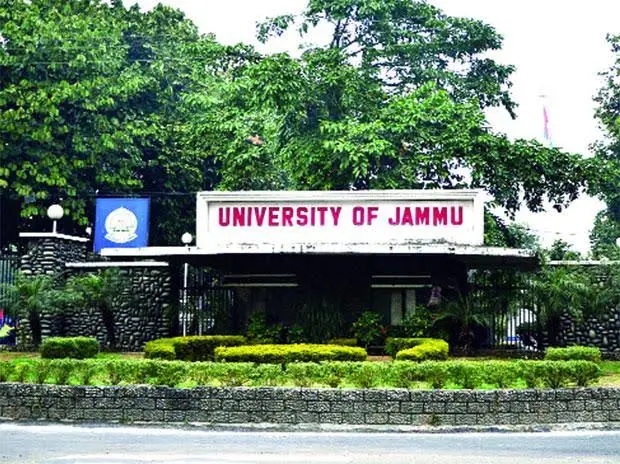Dr. Parveen Singh
In a pivotal move to enhance sustainability and campus management, the University of Jammu (JU) will prohibit the entry of four-wheel vehicles onto its grounds starting December 5, 2024. According to university officials, this initiative aims to create a greener campus and curb the issue of indiscriminate parking by unknown individuals. While the decision has elicited varied reactions, it undeniably marks an important advancement in rethinking urban spaces within educational settings. I recall my visit to Shanghai Jiao Tong University in 2014 during a fellowship program where I was struck by their innovative parking solutions—an underground parking facility situated beneath the campus grounds. This setup allowed the surface space to function as an open area, effectively combining utility with aesthetics. The aspiration for a similar configuration at Jammu University has remained in my thoughts, and the new policy appears to bring that vision closer to reality, albeit with significant variations. Instead of an integrated underground system reminiscent of Shanghai, Jammu University plans a centralized parking area near its residential zones, accommodating around 300 vehicles. Staff members will now need to walk from this specified parking lot to their offices. To support those in need, six e-vehicles have been introduced to transport individuals around the campus. Although this framework does not fully mimic the Shanghai example, it aligns with the larger goal of mitigating vehicular congestion and fostering a pedestrian-friendly environment.
While the initiative seems promising on the surface, lingering questions surround its intentions and sustainability. The timing of the announcement, which coincides with an impending NAAC team visit, raises concerns about whether this reflects a sincere commitment to tackling environmental and logistical issues or merely a superficial effort to impress the accreditation team. If the latter is true, this initiative risks becoming a fleeting undertaking, allowing the campus to revert to its prior condition once external pressures ease. However, assuming a long-term commitment, this initiative could lead to several measurable benefits: reducing the number of vehicles on campus directly lowers carbon emissions, aiding in the creation of a cleaner and healthier environment; promoting the use of bicycles and e-vehicles aligns with global sustainability objectives and sets an example for other institutions; the reduction of haphazardly parked vehicles enhances the campus’s visual appeal, fostering a more welcoming and organized atmosphere; freed-open spaces devoid of vehicular hindrance can be repurposed for recreational or academic pursuits, enriching campus life; with fewer vehicles around, the risk of accidents and congestion diminishes, ensuring a safer environment for pedestrians and cyclists; additionally, the introduction of e-vehicles ensures the campus remains accessible to individuals with mobility challenges. Encouraging walking or cycling to various locations on campus promotes physical activity among staff and students, contributing to improved overall health. By implementing such measures, Jammu University could position itself as a trailblazer in sustainable urban planning within educational institutions, potentially inspiring similar initiatives at universities nationwide.
Learning from Shanghai Jiao Tong University, Jammu University might evaluate the feasibility of constructing underground parking facilities beneath existing open spaces. This would maximize space efficiency and enable the surface areas to remain functional and visually appealing. Collaboration with Jammu Smart City Limited could also be enhanced to include the development of dedicated bicycle lanes on campus, increasing the availability of e-vehicles and bicycles for public use, and introducing smart parking solutions such as real-time monitoring and app-based access to streamline parking management. My skepticism regarding the university’s intentions is valid, particularly given the history of short-lived initiatives in public sectors. Nonetheless, if this decision is supported by continuous enforcement and infrastructural enhancements, it could signify a turning point for the university. Ensuring transparency in the implementation process and providing regular updates on the initiative’s effects would help foster trust among stakeholders. The restriction on four-wheelers is bound to face challenges; initial resistance from students, staff, and visitors is anticipated, especially from those who have been used to the convenience of on-campus parking. Effectively addressing these concerns will necessitate clear communication regarding the long-term advantages of the initiative, guaranteeing the availability and reliability of alternate transportation options like e-vehicles and bicycles, alongside periodic reviews and adaptations based on feedback from the campus community. The decision by Jammu University to prohibit four-wheelers is a bold action demonstrating awareness of modern environmental and logistical challenges. Whether this initiative arises from a genuine commitment to sustainability or under external pressures, its potential benefits are undeniable. By drawing insights from global examples and responding to local needs, the university can transform this initiative into a lasting legacy. The long-held desire for a greener, better-organized campus may finally be attainable, provided the university remains steadfast in its dedication to this cause.
(The author is Associate Professor, Department of Computer Sciences GDC Udhampur.)


Leave a Reply